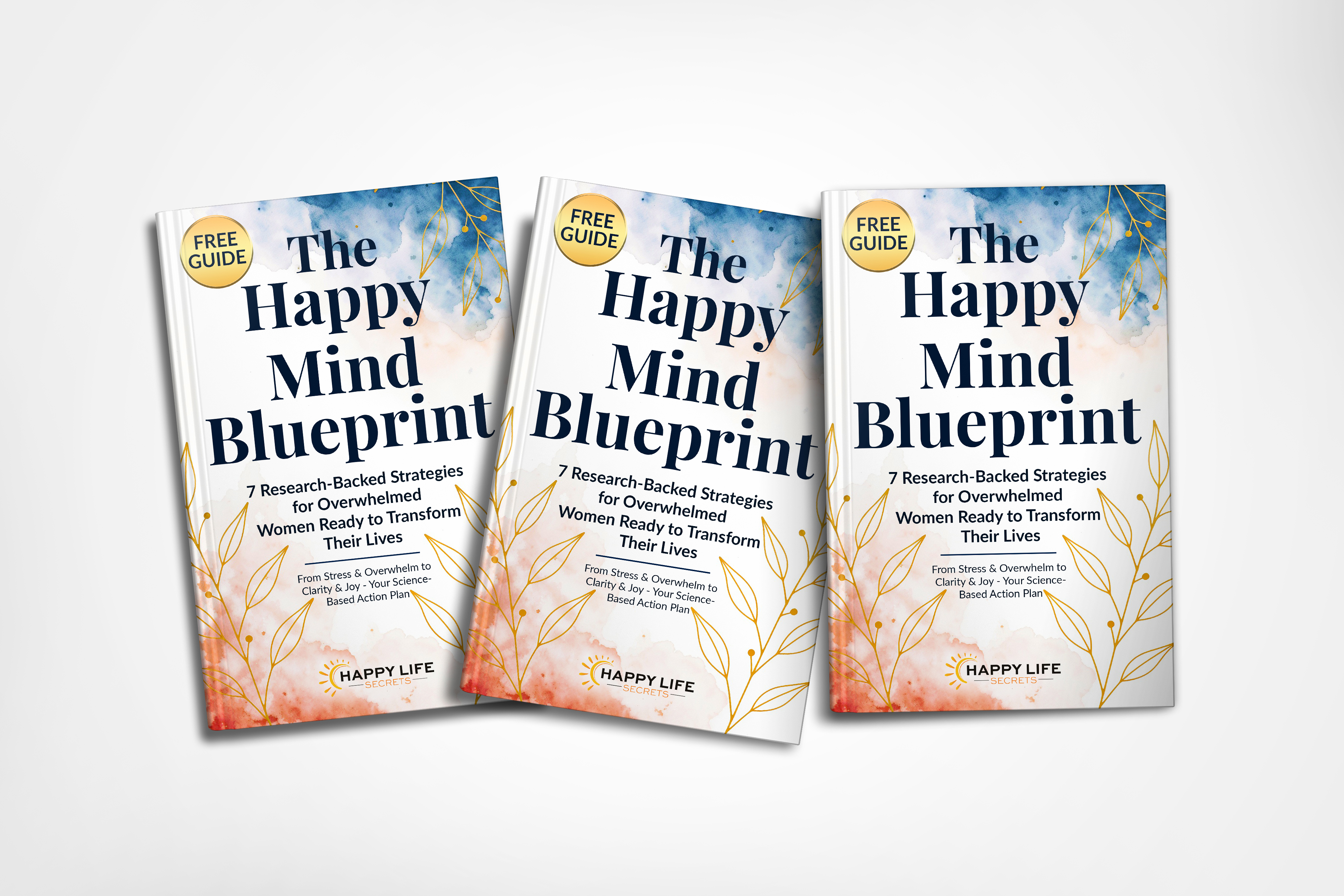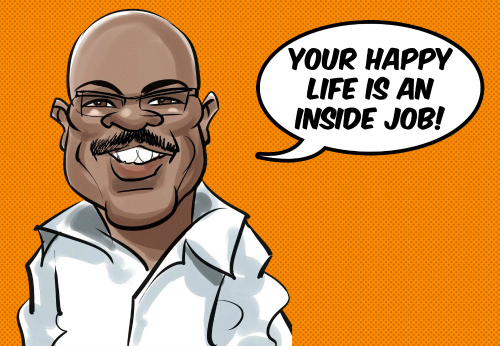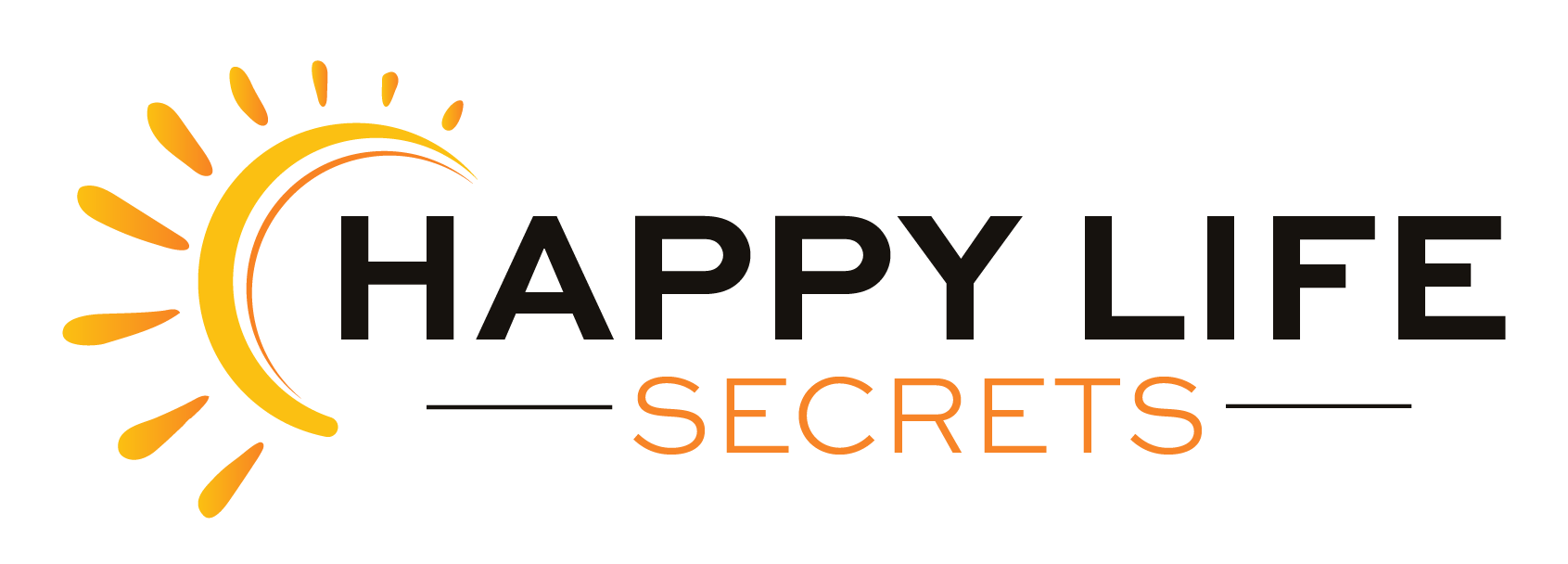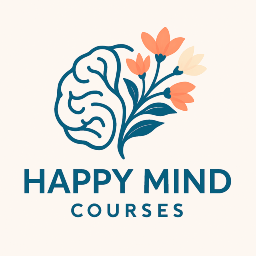
The Happiness Paradox: Why Trying Less Gives You More
Lucille stared at her vision board for the hundredth time this month. She'd done everything right—journaled gratitude daily, attended three self-improvement workshops, read seven happiness books, and forced herself to think positive thoughts. Yet here she was at 2 a.m., more anxious than ever, wondering why happiness felt further away despite all her efforts. What Lucille didn't yet understand was the happiness paradox trying less gives more—a revolutionary insight that completely transforms how we approach wellbeing.
If you're a busy professional woman in your thirties or early forties, exhausted from constantly chasing happiness yet feeling emptier than ever, you're not alone. And you're about to discover why everything you've been told about achieving happiness might be precisely what's keeping you from finding it.
The Hidden Problem: Why Trying Harder Makes You Less Happy
Rachel, a 34-year-old marketing director, spent thousands on happiness programs. She woke at 5 a.m. for meditation, tracked her mood hourly, scheduled joy activities, and relentlessly pursued positivity. After six months of this intensive happiness regime, her therapist asked a simple question: "Do you actually feel happier?" Rachel broke down crying. She felt like a failure at the one thing everyone else seemed to manage effortlessly.
The brutal truth? Rachel wasn't failing at happiness. She was succeeding brilliantly at the happiness paradox—the more desperately she pursued joy, the more it eluded her grasp.
Recent research from UC Berkeley's Greater Good Science Center reveals that valuing happiness too highly actually predicts lower wellbeing and increased depression. When we treat happiness as a goal to achieve, we inadvertently transform natural emotions into performance metrics, creating pressure that undermines the very experience we seek.
For busy women juggling careers, relationships, and often families, this paradox hits especially hard. You're already managing impossible expectations from every direction. Adding "be happy" to your endless to-do list doesn't create joy—it creates another way to feel inadequate.
The Cost of Forcing Happiness: What You're Actually Losing
Every time you force a smile when you're exhausted, dismiss your frustration because "positive vibes only," or guilt yourself for not feeling grateful enough, you're paying a hidden price. Let's be honest about what the relentless pursuit of happiness is really costing you.
Authentic emotional experience: When happiness becomes mandatory, all other emotions become problems to fix. That means you're no longer experiencing your actual life—you're constantly monitoring and judging your emotional state. Studies published in the
Journal of Personality and Social Psychology show that people who accept their negative emotions without judgment actually experience better psychological health than those who try to avoid or suppress them.
Present-moment connection: Lisa, a 38-year-old attorney and mother of two, realized she'd spent her daughter's entire fifth birthday party mentally comparing her happiness level to other mothers. She was so busy trying to feel the "right" emotions that she barely remembered the actual celebration. The happiness paradox trying less gives more means that our obsessive pursuit of positive feelings actually disconnects us from the experiences that could naturally generate those feelings.
Energy and time: Calculate honestly—how many hours weekly do you spend on happiness activities? Morning affirmations, gratitude lists, positive thinking exercises, self-help content consumption, workshop attendance. For many busy women, it's 5-10 hours weekly. That's time not spent on activities you might actually enjoy or relationships that authentically fulfill you.
Self-compassion: Perhaps most damagingly, when the happiness formula doesn't work (and it won't), you conclude something's wrong with you. Not happy after practicing gratitude for six months? You must be doing it wrong. Still anxious despite positive thinking? You're not trying hard enough. This self-blame compounds the very suffering you're trying to escape.
The Solution: How the Happiness Paradox Trying Less Gives More Actually Works
Here's the breakthrough that changes everything: happiness isn't something you achieve through effort. It's something you allow through acceptance. The happiness paradox trying less gives more isn't just a catchy phrase—it's a fundamental truth about how human wellbeing actually operates.
Think of happiness like falling asleep. The harder you try to make it happen, the more elusive it becomes. But when you release the effort and simply allow yourself to be, it arrives naturally. Research from
Stanford University's psychology department confirms that self-compassion and acceptance—not striving and effort—create the conditions for sustainable wellbeing.
The Science Behind Trying Less: Why Release Creates Results
Your nervous system operates on a fundamental principle: safety enables thriving. When you're constantly monitoring, striving, and evaluating your emotional state, you're activating your sympathetic nervous system—your threat response. This physiological state literally prevents the relaxed, open awareness where positive emotions naturally emerge.
Understanding the happiness paradox trying less gives more means recognizing that effort itself creates tension. That tension signals to your brain that something's wrong, which triggers protective responses that override positive emotional states. You're essentially fighting your own biology.
When you release the pursuit—when you stop trying to manufacture happiness—something remarkable happens. Your nervous system downregulates. The constant low-level stress of happiness striving dissipates. And in that spacious ease, genuine wellbeing has room to emerge organically.
This isn't passive resignation. It's active acceptance of what already is, combined with intentional choices about how you want to engage with your life. The difference is monumental.
Practical Application: Your 4-Week Transformation Path
Week 1: The Permission Practice
Start by giving yourself explicit permission to feel however you actually feel. When you notice you're not happy, instead of immediately trying to fix it, simply acknowledge: "This is how I feel right now, and that's okay." Jennifer, a 41-year-old entrepreneur, reported that this single practice reduced her baseline anxiety by half within two weeks.
Week 2: The Effort Audit
List every activity you do explicitly for happiness. Morning mantras, gratitude journals, positive thinking exercises, forced socializing. Now experiment with releasing half of them. Not because they're bad, but to test the happiness paradox trying less gives more hypothesis. Many women discover they feel lighter and more genuinely content with less happiness work, not more.
Week 3: The Present Practice
Instead of monitoring your emotional state, practice simply being fully present with whatever you're doing. Taste your coffee completely. Listen to your colleague without planning your response. Feel the sun on your skin without immediately photographing it for social media. Presence itself becomes the point, not the emotional payoff.
Week 4: The Integration
By week four, you're not trying to be happy. You're simply living your life with acceptance, presence, and self-compassion. Notice what emerges. Most women report unexpected moments of genuine joy, a pervasive sense of ease, and ironically, more frequent positive emotions than when they were actively pursuing happiness.
Common Obstacles and How to Navigate Them
"But won't I become lazy or unmotivated?"
This concern reveals a fundamental misunderstanding. Releasing the pursuit of happiness doesn't mean abandoning goals or growth. It means approaching them from wholeness rather than lack, from genuine interest rather than desperate striving. Paradoxically, women who embrace the happiness paradox often accomplish more because they're not draining energy on constant emotional self-monitoring.
"What if I'm genuinely depressed?"
Clinical depression requires professional support. However, understanding how the happiness paradox trying less gives more operates doesn't replace therapy—it complements it. Many therapists actually incorporate acceptance-based approaches precisely because fighting depression often intensifies it, while accepting your current state creates space for genuine change.
"My friends won't understand."
You don't need to announce your approach. Simply live it. When well-meaning friends suggest another happiness workshop, you can smile and say, "I'm trying something different right now." Over time, as you become more genuinely at ease, they'll likely become curious about what you're doing differently—not because you're trying to be happy, but because you've stopped trying so hard.
Real Stories: Women Who Discovered the Paradox
Michelle's Story: At 36, Michelle was a happiness-seeking machine. She'd completed seven self-help programs in two years, maintained extensive gratitude practices, and forced herself to "choose joy" daily. She was also secretly miserable. After discovering the happiness paradox trying less gives more, she stopped all her happiness activities for 30 days. "The first week felt like falling," she reports. "By week three, I felt lighter than I had in years. I started painting again—something I'd abandoned because it wasn't productive. Six months later, I'm not 'happy' in the Instagram sense, but I'm deeply content. And ironically, I experience more genuine joy now than when I was desperately chasing it."
Amanda's Journey: A 42-year-old surgeon and mother of three, Amanda had perfected the art of productivity—including happiness productivity. Her turning point came when her daughter asked, "Mom, why do you always look worried even when you're smiling?" That question cracked something open. Amanda began practicing acceptance of her actual emotional experience rather than forcing positivity. "I stopped journaling gratitude and started journaling truth," she explains. "Not to wallow, but to honor what actually is. The relief was immediate. And within weeks, I noticed I was spontaneously feeling grateful—but it was real, not performed."
Keisha's Transformation: After a divorce at 39, Keisha threw herself into happiness research. She read 23 books, attended workshops, hired coaches. Two years later, she was more knowledgeable about happiness than most psychologists—and more anxious than ever. "I finally realized I was treating happiness like a problem to solve," she says. "When I stopped trying to fix my emotional state and just allowed myself to be wherever I was, everything shifted. Not overnight—gradually. But now I trust that I'm okay regardless of my current mood. That trust itself is more valuable than any fleeting positive emotion."
The Long-Term Benefits: Life After the Pursuit
Women who genuinely integrate this paradox report profound shifts that extend far beyond mood. They describe a fundamental transformation in how they relate to their inner experience and external life.
Emotional resilience: When you're not constantly trying to feel a certain way, difficult emotions lose their power to derail you. You experience sadness, frustration, or disappointment, but you're not additionally suffering from the belief that these feelings mean something's wrong with you.
Authentic relationships: As you stop performing positivity, you become genuinely available for real connection. People sense the difference between someone forcing happiness and someone who's authentically at ease with themselves.
Creative capacity: When mental energy isn't consumed by emotional self-management, it becomes available for creativity, problem-solving, and genuine engagement with projects that matter to you.
Decision clarity: Without the constant pressure to optimize for happiness, you can make decisions based on values, authenticity, and long-term alignment rather than short-term emotional payoff.
Sustainable wellbeing: Perhaps most importantly, the wellbeing that emerges from acceptance doesn't require constant maintenance. You're not always one gratitude journal entry away from collapse. Your sense of okayness becomes intrinsic rather than dependent on external practices or perfect emotional states.
Your Next Steps: Beginning the Journey
Understanding the happiness paradox trying less gives more intellectually is just the beginning. The real transformation happens through lived experience. Here's how to start right now:
First, pause and notice how you're feeling right now. Not how you think you should feel, or how you want to feel—how you actually feel. Then, instead of trying to change it, simply acknowledge it. "This is my current experience." That's it. You've just taken your first step.
Second, identify one happiness activity you'll experiment with releasing for two weeks. Choose something that feels like an obligation rather than genuine nourishment. Notice what emerges in that space.
Third, commit to one week of present-moment practice. Whatever you're doing—working, parenting, eating, conversing—try to be fully there rather than evaluating your emotional state or planning your next happiness intervention.
Most importantly, approach this with curiosity rather than urgency. You're not trying to master a new happiness technique. You're discovering what's already here when you stop trying so hard to manufacture something else.
Conclusion: The Freedom in Paradox
The greatest gift of understanding that the happiness paradox trying less gives more isn't just increased wellbeing—it's the profound relief of no longer being at war with yourself. You don't have to perform emotional perfection. You don't have to optimize your inner experience like a project to manage. You can simply be human, in all its messy, complicated glory.
For busy women carrying the weight of impossible expectations from every direction, this permission to stop trying so hard feels revolutionary. Because it is. In a culture that commodifies and monetizes happiness, suggesting that you simply allow yourself to be as you are is genuinely radical.
The paradox is real: trying less does give you more. More peace, more authentic connection, more present-moment awareness, more creative capacity, more genuine joy. Not because you're pursuing these outcomes, but because you've stopped exhausting yourself in the pursuit.
You don't need another happiness program. You don't need to try harder, do more, or fix what's supposedly wrong with you. You need permission to be exactly where you are, feeling exactly what you're feeling, knowing that this acceptance itself creates the conditions for wellbeing to naturally emerge.
The transformation you seek isn't at the end of effortful striving. It's waiting in the ease that arrives when you finally set the burden down. Start there. Start with one breath, one moment, one decision to release the relentless pursuit and simply be. Everything else will unfold from that foundation.
Welcome to the paradox. Welcome to the freedom of trying less. Welcome home to yourself.

7 Research-Backed Strategies for Overwhelmed Women Ready to Transform Their Lives
Your Mind Won't Stop Racing. This Blueprint Will Help It Rest.
Ready to stop replaying conversations at 3 AM and actually transform your overwhelm into clarity?
Research shows that 72% of women report racing thoughts as their #1 barrier to peace and restful sleep. If you've ever had 47 browser tabs open... in your mind... you know exactly what we're talking about.
Here's the truth: You don't need another "just breathe" platitude or Instagram-worthy self-care ritual. You need research-backed strategies that work in under 5 minutes—even when you're exhausted, overwhelmed, and wondering if you'll ever feel calm again.
Download "The Happy Mind Blueprint" FREE
This isn't just another PDF that sits unopened in your downloads folder. It's your complete 30-day transformation system—backed by neuroscience, tested by thousands of women, designed for your actual chaotic life.
🧠 What Science-Backed Strategies You'll Master:
✅ The 4-4-4 Reset Technique – Studies from Harvard Medical School show this Navy SEAL breathing method reduces anxiety by 62% in under 2 minutes. Use it before meetings, in traffic, or at 3 AM when your mind won't shut off.
✅ Break the Overthinking Cycle – Research from Penn State reveals specific techniques that reduce rumination by 35% within two weeks. Finally silence that mental replay button.
✅ Transform Self-Criticism Into Self-Compassion – Clinical trials demonstrate this practice produces better outcomes than positive thinking alone. Stop being your own worst enemy.
✅ Micro-Recovery Methods – Data proves that 5-minute resets throughout your day beat weekend spa trips for sustainable well-being. No budget or free time required.
✅ Sleep Optimization Protocol – Studies show these evidence-based techniques reduce anxiety symptoms by 25% and actually get you sleeping through the night.
✅ Boundary Scripts That Work – Research indicates just one consistent boundary significantly reduces stress within two weeks. Say no without guilt (finally).
✅ Your Happiness Ecosystem Design – Environmental psychology shows your surroundings shape your mood more than willpower. Stop swimming upstream.
🎯 BONUS: Your Complete 30-Day Integration Plan
Clinical research proves that structured implementation produces 3x better lasting change than self-guided methods alone. This guide includes your exact week-by-week roadmap so you're never wondering "what do I do next?"
💡 Why This Blueprint Is Different:
Unlike generic wellness advice, this guide synthesizes research from Stanford, Harvard, Penn State, and JAMA—then translates it into strategies you can use today. No meditation retreats, expensive supplements, or total life overhauls required.
Studies show that the strategies in this guide produce measurable improvements in:
- Anxiety symptoms (within 7 days)
- Sleep quality (within 3-5 days)
- Overthinking patterns (within 2-3 weeks)
- Overall well-being (within 30 days)
This is transformation backed by science, not Instagram quotes.
🙋♀️ Who This Blueprint Is For:
You're ready for this if you're exhausted from:
✅ Lying awake replaying your day while your to-do list runs on loop
✅ That constant low-level panic that makes checking email feel like facing a lion
✅ Being way harder on yourself than you'd ever be on a friend
✅ Waiting for a "free weekend" to finally rest (spoiler: it never comes)
✅ Knowing you need to change but having no idea where to start
You want this if you're ready for:
✨ A calm mind you can access on command—not just on vacation
✨ Research-backed tools that work in your real life (kids crying, deadlines looming, phone buzzing)
✨ Strategies that take minutes, not hours
✨ Measurable results you can track
✨ A complete system, not scattered tips
🎁 What You Get Inside:
📖 45+ pages of research-backed content
🧘♀️ 7 complete strategies with implementation guides
📋 30-day transformation plan with weekly focus areas
✅ Downloadable tracking sheets for all practices
🔬 Research citations from leading universities
💪 Real-world applications for every scenario
⚡ Quick Win timelines so you know what to expect
⏰ Your Calmer Mind Is 5 Minutes Away
Stop letting stress, anxiety, and racing thoughts control your life. These techniques work immediately—you could be feeling calmer before you finish your next cup of coffee.
Join thousands of women who've discovered how to calm their minds on command. Your transformation starts the moment you open this guide.
🎯 Download Your FREE Blueprint Now
No credit card required. Instant delivery. Unsubscribe anytime.
Your racing mind doesn't mean you're broken. It means you've never been taught the right techniques.
That changes today.
📧 Instant PDF Delivery
🔒 Your Privacy Protected
✅ 100% Free

7 Research-Backed Strategies for Overwhelmed Women Ready to Transform Their Lives
About Herb
Herb is the founder of Happy Life Secrets—a practical guide to building the life you actually want.
He doesn't teach theory. He shares what works. His approach cuts through the noise: happiness, health, and financial peace aren't separate goals to chase. They're connected. And when you understand how they work together, everything gets easier.
No gurus. No overnight transformations. Just research-backed strategies that have been tested and proven over time.
Brand Origin Story
Happy Life Secrets wasn't built on a breakthrough moment.
It started with questions.
After years of building a life of intention—navigating relationships, health, and financial stability—Herb kept hearing the same thing from friends, family, even strangers:
"How did you build this kind of life?"
"What's the actual process?"
The truth? There was no secret formula. Just small decisions, repeated consistently. Habits that compounded. Mindset shifts that changed everything without being dramatic.
But most people never learned this. They were stuck chasing the next goal, the next fix, the next version of themselves—always searching, rarely satisfied.
Herb realized: what if the answer isn't out there? What if it's already in your hands—you just need a clearer system?
That's why Happy Life Secrets exists.
Not to sell you a dream. Not to promise a perfect life.
But to show you what's actually possible when you stop overcomplicating it.
This isn't about becoming someone else. It's about building a life you don't need to escape from—one choice at a time.
That's the real secret!
Happy Life Secrets delivers reliable information and authentic inspiration for women who deserve both.




